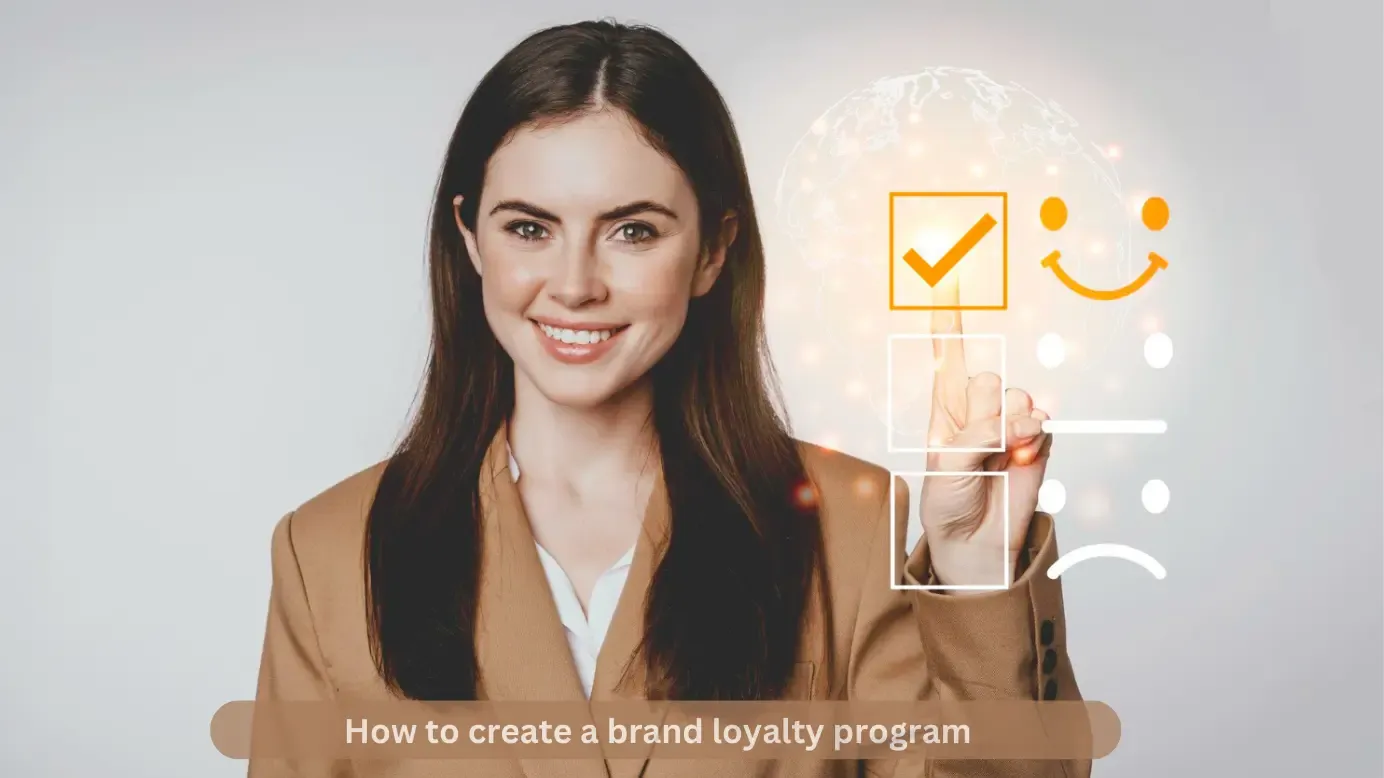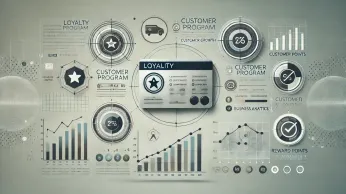How Do Companies Create Successful Brand Loyalty Programs
A brand loyalty program is a strategic tool for brands to cultivate enduring customer relationships, aiming to foster customer loyalty, encourage repeat purchases, and amplify brand advocacy. Discover how companies build successful brand loyalty programs to boost customer retention and engagement.
On this page
Successfully launching a brand loyalty program is a big challenge for retailers. According to a study by Capgemini, 97% of loyalty programs rely on a transaction-based model from which 77% of these programs fail within the first 2 years. In this predicament, the ideal solution would be to identify your specific program goals.
Let’s analyze a few questions to understand this better:
- Is your objective to increase sales volume by a slightly bigger percentage?
- Do you want to attract brand engagement and encourage repeat purchasing?
Solving these two concerns will help you to move a step closer to choosing the best brand loyalty program for your business. Apart from these, learning how a loyalty program works is very important.
Retailers focusing on one type of loyalty program will become less appealing to a broader audience. On the other hand, brands with loyalty programs offer more flexible, intuitive, and personalized benefits for customers, offering a wide array of services.
Discussing a brand's loyalty program involves highlighting strategies and benefits offered to retain customer loyalty, rewarding support, and encouraging repeat purchases. In this article, we will look into the examples, strategies, importance, and future of brand loyalty programs.
What is a brand loyalty program?
A marketing strategy used by brands to encourage repeat purchases is known as a brand loyalty program. They play a role in different sections, including customer experience, brand values, product benefits, point systems, or even exclusive access to new products or events.
📖 An example is Apple’s brand loyalty, considered the highest in the smartphone industry. The organization’s customer base shows a repeat purchase rate of 64% for MacBooks, proving how important brand loyalty is for customers.
Brand loyalty program examples: inspiring strategies that work
Building brand loyalty is more than offering discounts—it’s about creating meaningful experiences that keep customers coming back. Many top brands have cracked the code by designing loyalty programs that go beyond transactions to foster genuine connections. Here are some outstanding examples of brand loyalty programs and what makes them effective.
1. GoPro
GoPro is a globally renowned camera brand known for its affordable, wearable, and mountable HD video cameras. The company focuses on building brand loyalty by utilizing the benefits of user-generated content.
The key aspect that worked out for them is its focus on a niche market, helping cultivate a community of like-minded individuals. Their marketing strategy acts as a model on how to use customer experiences effectively.
The brand loyalty program implemented is “The GoPro Awards:. Here, their users are encouraged to submit their wonderful GoPro recordings, images, and clips as part of their GoPro awards campaign where they get a chance to be recognized and compensated. Outcomes:
- Paid out $1 million in awards to artists globally.
- The GoPro programme was available to over 196 countries in which 2,26,000 entries were received.
2. Tesla
Tesla is one of the renowned electric motor brands with an NPS score of 97% and a brand loyalty rate of 68.4%. Their brand loyalty program focuses on generating repeat purchases in return for offering loyalty points. This initiative helps promote customer loyalty and gives rise to attracting new business models.
Additionally, Tesla offers a referral program where, for each referral made, the referrer gets loyalty benefits or referral credits, proving to be one of the best examples of a brand loyalty program.
Importance of brand loyalty program
Building brand loyalty is essential for brands, looking to build a strong customer base and achieve long-term success. By creating loyal customers, businesses can enjoy a variety of benefits that contribute to their growth and profitability.
Let’s look at why building brand loyalty is important and how loyalty programs play a crucial role in achieving this goal.
1. Increased customer lifetime value
One of the main advantages of building brand loyalty is the potential for increased customer lifetime value. When customers are loyal to a brand, they tend to make repeat purchases over a long period. Moreover, selling products or services to an existing customer is 60-70%, compared to selling to a new customer which is 5-20%.
Loyal customers also tend to spend more with a brand compared to new or occasional customers. They have a higher average order value and are more likely to try out new products or services. By focusing on building brand loyalty, businesses can tap into this potential and maximize the value they get from each customer.
2. Positive word-of-mouth
Brand loyalty can also result in positive word-of-mouth, which is extremely valuable in today's highly connected world. Loyal customers are more likely to recommend a brand to their friends, family, and colleagues. They become brand advocates who willingly share their positive experiences and encourage others to try the products or services.
💡 As per Nielson, 77% of consumers are likely to purchase a product once it is recommended. Word-of-mouth recommendations carry significant weight as they come from trusted sources. When potential customers hear about a brand's exceptional products or outstanding customer service from someone they know and trust, it builds credibility and increases the likelihood of them becoming customers themselves.
3. Enhanced customer engagement
Customer engagement plays a vital role in building strong relationships between brands and their customers. It involves ongoing interactions, personalized communication, and meaningful touchpoints that keep customers actively engaged with the brand.
Loyalty programs serve as an effective tool for enhancing customer engagement. They provide a structured platform for brands to connect with their customers on a regular basis. Through loyalty programs, businesses can communicate exclusive offers, personalized rewards, and relevant updates that make customers feel valued and appreciated.
Moreover, loyalty programs encourage customers to actively participate in activities such as earning points, redeeming rewards, and providing feedback. This level of engagement fosters a sense of ownership and strengthens the emotional connection between the customer and the brand.
Key strategies to build a brand loyalty program
When it comes to designing a brand loyalty program that delights your customers, there are several key strategies you should consider. These strategies will help you create a program that not only meets the needs and preferences of your customers but also fosters an emotional connection and drives sustained engagement.
Let's explore the ways to build brand loyalty in more detail:
1. Understand customer needs and preferences
One of the fundamental aspects of designing a successful brand loyalty program is understanding your customers' needs and preferences.
By using data analytics, you can gain valuable insights into customer behavior and tailor your loyalty program accordingly. This allows you to offer personalized rewards and experiences that resonate with your customers.
2. Create a seamless loyalty program experience
To ensure the success of your brand loyalty program, it's important to create a seamless and engaging experience for your customers. This means removing any potential barriers to participation and making it easy for customers to interact with your program.
Consider implementing an omnichannel journey, allowing customers to engage with your loyalty program across multiple touchpoints, such as online, in-store, and mobile apps.
📖 Disney is a great example. Customers can use the benefits of the My Disney Experience tool to plan their trips. Moreover, they offer another useful tool called the Magic Band Program, which is a phone storage device. Technology plays a crucial role in enabling a seamless program interface. Focus on creating a user-friendly mobile app experience that allows customers to easily access their rewards, track their progress, and engage with exclusive content. This will enhance the customer experience and increase the perceived value of your loyalty program.
3. Build an emotional connection through your loyalty strategy
Creating an emotional connection with your customers is key to building strong brand loyalty. Your loyalty program should go beyond transactional rewards and focus on evoking positive emotions and building a sense of community among program members.
📖Levi’s, an American clothing brand, is an example of exhibiting an emotional connection with the audience. The company took the initiative of planting a tree for every download of the Levi’s app.
Implement strategies such as surprise and delight rewards, personalized communication, and exclusive events for loyal customers. These initiatives make customers feel valued and appreciated, fostering a deeper emotional connection with your brand.
4. Offer meaningful rewards to drive sustained engagement
The rewards you offer in your loyalty program play a crucial role in driving sustained engagement. It's important to strike a balance between attainability and aspirational value to keep participants motivated over the long term.
Using tiered benefits is a great idea that incentivizes continued spending. Mariott International is a good example of this. The organization offers its members rewards and experiences, helping its customers not only earn points but also use them for credit card usage, sporting events, or culinary events.
In addition to tangible rewards, consider offering experiential rewards that provide unique and memorable experiences for your customers. This could include VIP access to events, personalized recommendations, or early access to new products or services. These types of rewards create excitement and further deepen the emotional connection with your brand.
While implementing these strategies, remember to analyze data, gather feedback from participants, and optimize your program to ensure its long-term success.
The future of brand loyalty in the digital age
In today's digital age, brand loyalty is changing, and brands need to stay ahead of the game to maintain a strong connection with their audience. Here are some new trends in customer loyalty that are shaping the future of brand advocacy:
1. Growing importance of advocacy
Brand advocacy has become a powerful driver of customer loyalty in the digital age. With social media and online review platforms on the rise, customers now have a way to share their experiences and recommendations with a large audience. Positive word-of-mouth can have a big impact on a brand's reputation and attract new customers. 75% of consumers feel word-of-mouth has played a key role in their purchasing decisions. To capitalize on this trend, businesses should focus on creating amazing experiences that inspire customers to become brand advocates.
2. Role of technology in personalized experiences
Technology plays a crucial role in providing personalized experiences that foster customer loyalty. By using data analysis and artificial intelligence, businesses can understand individual customer preferences and behaviors. This information can then be used to customize loyalty programs, offers, and rewards for each customer.
For example, giving personalized recommendations based on past purchases or offering special deals based on location can improve the overall customer experience and strengthen loyalty.
3. Integration of mobile apps
Mobile apps have become an important part of our daily lives, giving businesses a chance to connect with customers wherever they are.
Loyalty programs that are part of mobile apps allow for smooth interactions between brands and customers, making it easy for users to access rewards, track their progress, and take part in exclusive promotions.
Additionally, mobile apps enable brands to send personalized notifications and offers directly to customers' smartphones, increasing engagement and loyalty.
4. Gamification for enhanced engagement
Gamification is a great way to increase engagement and build customer loyalty. By adding elements like challenges, badges, levels, or points systems into loyalty programs, businesses can create a sense of excitement and accomplishment for participants. This not only encourages repeat purchases but also deepens the emotional connection with the brand.
💡For instance, MSI uses its gamification-based loyalty program which features a tiered system with referrals, points, rewards, and wallets.
5. Subscription-based loyalty programs
Subscription-based loyalty programs are becoming more popular because they offer convenience and exclusivity to customers.
These programs usually involve a monthly or yearly fee in exchange for special benefits like free shipping, early access to new products, or exclusive discounts. By adopting a subscription model, businesses can ensure regular engagement and repeat purchases while giving loyal customers extra value.
6. Augmented reality (AR) experiences
Augmented reality is changing how customers engage with brands and products. By incorporating AR technology into loyalty programs, businesses can provide immersive experiences that captivate and delight customers.
For example, beauty brands can offer virtual try-on experiences where customers can see how different products look on them before buying. These interactive experiences not only increase customer engagement but also leave a strong impression that contributes to brand loyalty.
As the digital world keeps evolving, businesses must adjust their loyalty strategies to meet their customers' changing expectations. By embracing these new trends and using technology effectively, brands can create personalized experiences, encourage advocacy, and develop long-lasting relationships with their audience.
Case studies of companies with successful loyalty programs
Brand loyalty programs are not just tools to reward customers; they are strategic initiatives to foster long-term relationships, increase customer retention, and drive business growth. Here are some real-world examples of brands that have implemented successful loyalty programs, showing how these strategies can translate into tangible results.
1. IHG Loyalty program
IHG One Rewards, the loyalty program of InterContinental Hotels Group (IHG), aimed to revamp its loyalty program to better cater to the diverse needs of its customers. The program needed to be more engaging, with a wider range of rewards and a more streamlined user experience.
IHG One Rewards implemented several key features to address these challenges:
- Tier system: The program introduced a tier system with five levels: Club, Silver Elite, Gold Elite, Platinum Elite, and Diamond Elite. This system allowed members to advance based on their stay frequency and earn more benefits and rewards as they moved up the tiers.
- Free stays: Members could earn points for complimentary stays at IHG hotels, providing a tangible reward for loyalty and a cost-saving measure for travelers.
- Redemption options: The program offered a variety of redemption options, including free nights, points & cash, and experiences. This flexibility in redemption options made the program more attractive to customers.
- Partnerships: IHG formed partnerships with airlines and commercial partners to expand the earning and redemption opportunities for members
Results
- Increased member engagement: The tier system and diverse redemption options led to a significant increase in member engagement, with more members participating in the program and earning rewards.
- Improved customer retention: The loyalty program's focus on rewarding repeat customers resulted in improved customer retention rates, with members staying longer and more frequently at IHG hotels.
- Enhanced user experience: The streamlined user interface and simplified rewards portal made it easier for new members to understand the program and navigate the rewards process.
- Increased revenue: The loyalty program's ability to drive repeat business and encourage members to spend more at IHG hotels resulted in increased revenue for the company.
2. Macy
Macy, a leading American department store, faced significant challenges in its loyalty program, particularly with the Macy's Credit Card. The program struggled with high interest rates, limited redemption options, and a lack of reward flexibility. This led to declining customer satisfaction and loyal and loyalty, ultimately affecting the company's overall performance.
Solution
To address these issues, Macy's implemented several key features:
- Tier system: The program introduced a tier system with three levels: Silver, Gold, and Platinum. Each tier offered increasing rewards and benefits, encouraging customers to spend more and maintain loyalty.
- Rewards structure: The rewards structure was designed to provide more flexibility and value to customers. For instance, Platinum members earned 5 points per dollar spent at Macy's, while Gold members earned 3 points per dollar, and Silver members earned 2 points per dollar.
- Additional benefits: The card offered additional benefits such as birthday gifts, free shipping for Gold and Platinum members, and access to exclusive offers and events
Results
- Increased customer engagement: The tier system and rewards structure led to increased customer engagement, with more members participating in the program and earning rewards.
- Improved customer retention: The additional benefits and rewards structure helped improve customer retention rates, as customers felt more valued and incentivized to continue shopping at Macy's.
- Increased revenue: The loyalty program's ability to drive repeat business and encourage members to spend more at Macy's resulted in increased revenue for the company
How does Loyalife help scale the brand loyalty program?
Loyalife offers a complete solution for building and managing effective loyalty programs. Here's a breakdown of its key features:
1. Design flexible programs:
- Customization: Set up your program exactly how you want it. You can define points, tiers, and rewards that perfectly align with your business goals.
- Tiered system: Create different membership levels with unique benefits. Motivate customers by awarding more points for higher tiers.
2. Deepen customer engagement:
- Targeted promotions: Reach the right customers with the right rewards. Segment your audience based on behavior and preferences for laser-focused campaigns.
- Teamwork: Collaborate with your team to design and manage marketing initiatives within the platform.
- Personalized communication: Craft customized email templates to award bonus points and schedule campaigns. Use omnichannel communication for seamless interaction.
- Member insights: Gain a deeper understanding of your members. View detailed information to launch personalized campaigns that resonate with different segments.
3. Track and analyze performance:
- Data at your fingertips: Monitor key metrics like member transactions, points earned, and points redeemed through comprehensive reports.
- Automated reporting: Schedule automated reports to receive valuable insights on a daily, weekly, or monthly basis.
With Loyalife, you can build a loyalty program that fosters stronger customer relationships, boosts engagement, and drives long-term business success. Want to know more? Connect with our loyalty experts now.
Conclusion
Brand loyalty programs are an effective way for companies to build long-term relationships with their customers. By offering rewards, discounts, and exclusive benefits, these programs incentivize repeat business and encourage customers to remain loyal to the brand.
To make brand loyalty last, companies should focus on leaving a lasting impression on their customer base, meeting customer needs, providing excellent customer service, finding a strong brand voice and story, and building a brand community. Rewards programs are a key element in keeping customers loyal, as they offer tangible benefits for repeat business.
FAQ's
1. Why is it essential to learn how to create a loyalty program?
Knowing how to create a loyalty program allows businesses to retain customers, boost lifetime value, and strengthen brand equity, which ultimately drives long-term growth.
2. What are some effective brand loyalty strategies for businesses?
Effective strategies include offering personalized rewards, creating tier-based benefits, engaging through exclusive experiences, and using data insights to refine loyalty initiatives.
3. How do companies go about building brand loyalty?
Companies build brand loyalty by delivering consistent value, maintaining trust through transparency, and creating positive, memorable customer experiences that keep buyers coming back.
4. What steps are involved in creating a brand loyalty program?
Creating a brand loyalty program involves identifying customer preferences, designing a rewards structure, leveraging technology for seamless operations, and promoting the program effectively.
5. How can businesses improve at building brand loyalty?
Businesses can improve by understanding their audience, delivering personalized offers, engaging customers through multiple channels, and consistently evolving their loyalty programs based on feedback.
6. What are some practical ways to build brand loyalty?
Practical ways include offering excellent customer service, ensuring product quality, introducing referral programs, and providing meaningful, tailored rewards that resonate with customers.
7. How do companies create brand loyalty in competitive markets?
Companies create brand loyalty by differentiating themselves through unique value propositions, fostering emotional connections, and consistently exceeding customer expectations.
8. What are some examples of successful brand loyalty programs?
Successful programs include tiered rewards, subscription-based benefits, and collaborative partnerships with complementary brands that enhance customer experiences and add value.
9. How do brand loyalty programs impact a business's growth?
These programs increase customer retention, encourage repeat purchases, and build strong emotional connections, which lead to higher revenues and sustained growth over time.








